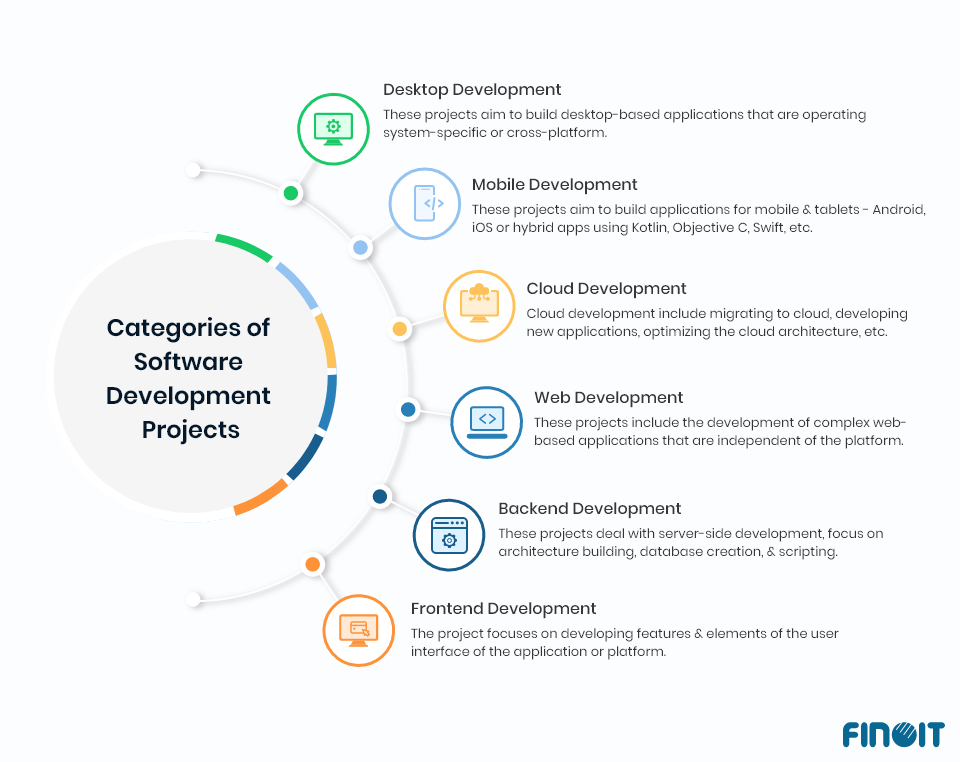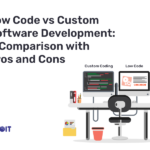How To Categorize Software Development Projects By Objectives (End-to-End Guide)

Software development projects are evolving as new technologies, practices, and trends are penetrating the space. Amongst the factors that help to categorize software development projects, objectives top the list. Thus, not letting the project objectives go ignored, here is how software project types are classified based on envisioned goals.
Embarking on building a software application has become a part and parcel of the business world, for software applications are the building block of successful enterprises. As technological advancements continue to strike at a breakneck speed, software development is emerging as a fast-changing and hyper-competitive field.
The journey to building the best application can become a herculean task if you don’t have answers to these questions:
- Do objectives of software development projects influence project type?
- What software development project type should one select based on objectives?
- How are business objectives closely related to software development project types?
37% of project failure cases have been associated with project objectives, as businesses tend to ignore these fundamental questions. The effects include poor project portfolio management, escalated cost, and delay in application delivery.
The race to remain competitive is again at the very top of the technological agenda, and businesses across the globe, especially the United States (US), Europe, and Australia are all the more in need of selecting the best software development project types and strategies. Instead of doubling down on a fixed course, they must take into account their objectives to decide on the course.
We offer you comprehensive answers to the above questions by covering different categories of software development projects as can be decided by the project objectives.
What is a Software Development Project?
A software development project is a venture that is led and managed by a software product engineering company. The company employs multiple experts in software engineering who develop applications using a combination of tools, techniques, and approaches. The project is executed within the boundaries of resources – time, people, and budget, and is aimed at adding significant value to the business that is going to utilize the application.
Why are Software Development Project Objectives Important?
It is impossible to imagine a project without objectives. Clearly defined objectives give direction to the project and guide stakeholders in the development process to adopt the right course. Goal and Solution are two dimensions of project objectives. The final objectives when broken into individual goals make it easy to identify solutions to reach them.
Correlating Software Development Project Type with Objectives
“Objectives of Software product development project play a crucial role in determining the choice of project type. Identifying the appropriate project category has become a complex challenge in software development; which can be cocluded and made decision through clearly defined objectives. Beyond helping in the selection of the project type, these objectives also help define the project’s roadmap, thereby streamlining the entire development pipeline from start to finish.
Choosing a project type in the light of objectives is the hallmark of a rational selection. Further to giving the direction to deciding the project type, objectives guide in defining the software requirement specifcation document which sereves as a roadmap for the project, thereby streamlining the end-to-end pipeline.
Understanding Software Development Project Types by Objectives
Objectives assist in project planning and building a foundational structure for the project. Here, we look into major software development project types that project objectives decide.
Custom Software Development Projects
In custom development, business or process needs are the central elements. The project aims to design and build a custom application that can be integrated into the business value chain. While custom projects can be categorized into two types which have been discussed subsequently, in general, a custom software development project has the following characteristics.
- Objectives, audience, and dynamics of the businesses are input to custom projects since the application caters to a specific target audience.
- Software development team needs to be aware of scope creep to move in parallel with the project schedule.
- Development seeks a collaborative approach as end-user interference is essential at critical junctions to validate quality and performance criteria.
Here is an insight into internal custom development and external custom development projects.
| Internal Custom Development | External Custom Development |
|---|---|
| End-to-end project planning is a responsibility of the enterprise which has a dedicated in-house software development team. | Enterprises lack resources and outsource the project to an expert software development company. |
| Functional heads/process owners collaborate with the development team to work on the application idea. | As process owners, clients involve themselves in the entire development journey. |
| Only enterprises with a strong financial base can drive software development projects internally. | Start-ups and small-to-medium scale businesses (SMBs) usually go with external resources, as this is a cheaper recourse. |
Commercial Off-the-shelf Software Development Projects
Managing commercial off-the-shelf software development projects (COTS-based systems) needs to take into account three important factors – assessment efforts, tailoring efforts, and managing glue code. Here is how each of these plays its role in a COTS project.
Assessment: Business stakeholders assess existing COTS products and provide inputs to the software development team. Project members chart out a plan to develop individual components and assimilate them into the larger system.
Tailoring: Developers produce individual COTS program codes. Independent of the system for which they have been developed, these codes act as standalone applications.
Glue Code: Project team has to adopt a framework that would allow the software application to easily connect with internal and external components in the system.
In a COTS project, the above three dimensions drive iterations, as even after the delivery, if a COTS solution falls short of expectations, the software development vendor can move back to the analysis phase.
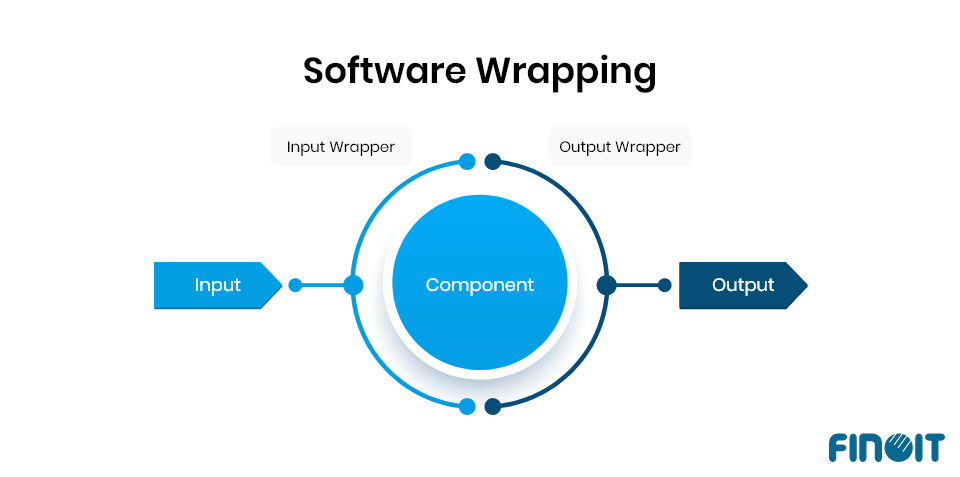
Maintenance Projects
The responsibility of a software development team doesn’t get over after the delivery of software, but they remain committed to maintaining the application throughout its lifecycle.
Software maintenance projects keep an application in efficient operating condition, ensure its smooth functioning, and restore its functionalities to use in case they cease to work after prolonged use. They may also deal with modification of applications for performance improvement after the delivery.
A variety of reasons might trigger a software maintenance project. These include:
- Fault correction
- Design Improvement
- Enhancing the features
- Establishing interfaces with external systems
- Bringing in new programs to support better interaction with hardware
Driven by any of these reasons, a software maintenance project falls under four types, which are:
- Corrective Maintenance: Removing bugs, and fixing faults in the application.
- Adaptive Maintenance: Adding features in the application so that it can adapt to a new system.
- Perfective Maintenance: Adding features and functionalities that meet the needs of the users.
- Preventive Maintenance: Attending issues in time to prevent them from escalating into serious problems in the future.
Teams use software reverse engineering to extract knowledge about the application even without knowing the source code, and to test the applications for performance and security.
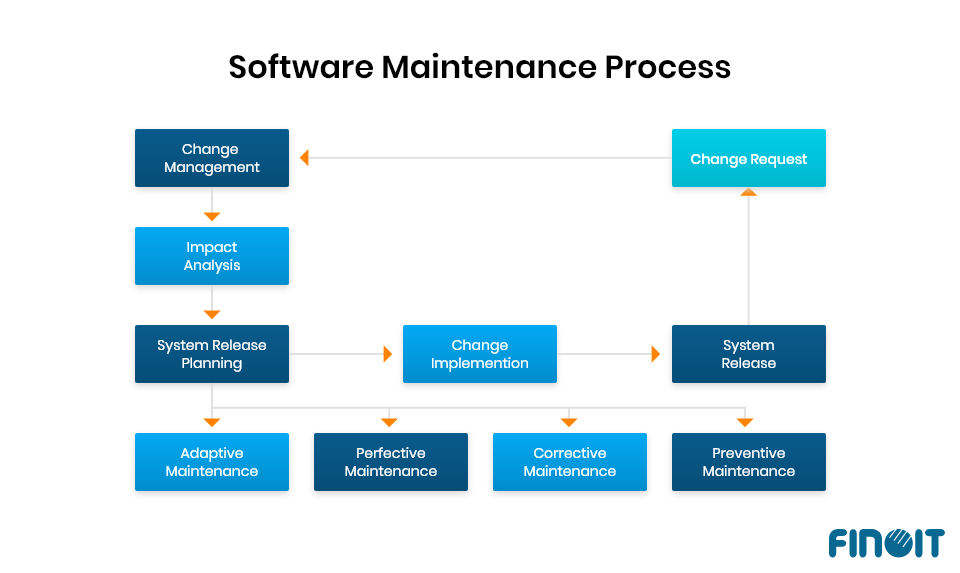
Limiting ourselves to the preceding classification obscures how reengineering objectives can give direction to the project. Whether it is building an online store or opening a new tech-based revenue model, business objectives also decide software development project types. Here, we look into these areas.
- Process Disruption: Software applications have become a disruptive force across industries. Enterprises have started investing heavily in software-led transformation since software has become a lynchpin of successful reengineering.
- New business model introduction: Software applications are an indispensable force to reckon with when switching from traditional to modern business plans, and application-based strategies steer a business in the perfect direction.
- Digital Transformation: No more a choice but a strategic obligation, digital transformation rests completely on the effectiveness of the applications developed for undergoing the digital transformation journey.
- Entry into a new segment: With software applications, it is easier to interact with the audience from a new segment. For instance, an online store can start selling apparel along with footwear without hassles.
- Lower operational expenses: Right from reducing inventory management and procurement costs to improving asset utilization, software applications help optimize the minutest costs in every smallest business process.
- Bring transparency: Software applications create value by making business processes transparent. Enabling continuous tracking and monitoring, applications empower stakeholders with a platform to control and manage the processes.
- Offer convenience to stakeholders: Customers, vendors, and employees desire a seamless interaction with the system and demand immediate results. To build and foster long-term relations with stakeholders, enterprises need interactive applications.
Drilling Down further into Categories of Software Development Projects
Here is a further insight into classifying software development projects based on the application’s usability and form.
Desktop Development
Desktop application development has earlier been the core focus of enterprises when they would scramble for the best software for PCs. While many projects, today, are mobile-based, still desktop development has its own place in software development. In desktop software development projects, developers build operating system-specific applications or even cross-platform applications – desktop applications that can run on different operating systems.
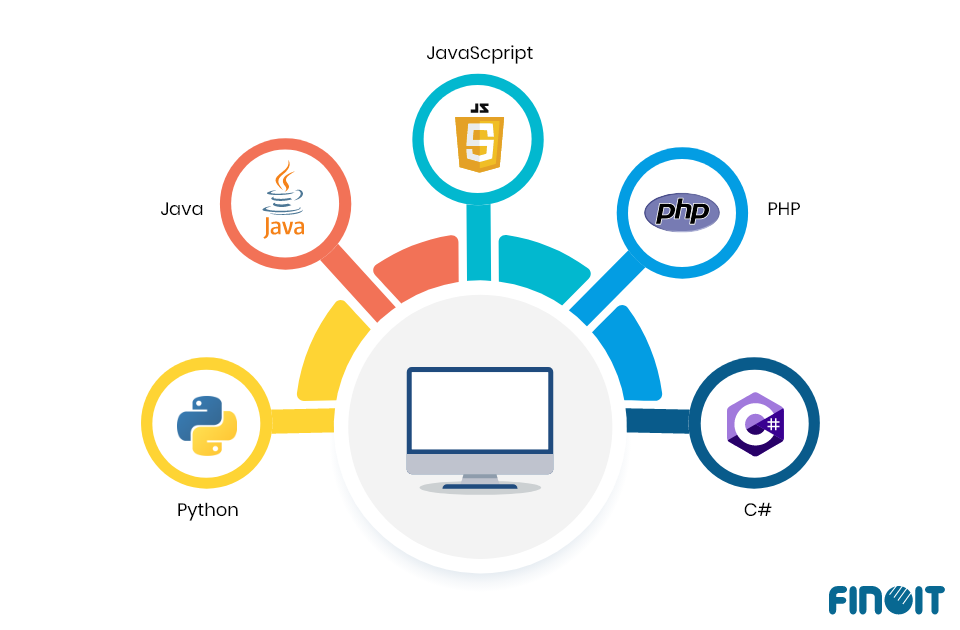
Mobile Development
Increasing tech-savviness among common people, the rise of digital marketplaces, and mobile-based platforms have given a boost to mobile app development. Almost every business, today, needs a mobile app. Thus, the increasing impetus on mobile development projects. These projects aim to build applications for mobile and tablets. The project team expands across mobile developers with expertise in Android, Kotlin, Objective C, Swift, etc, UI/UX experts, and project management professionals.
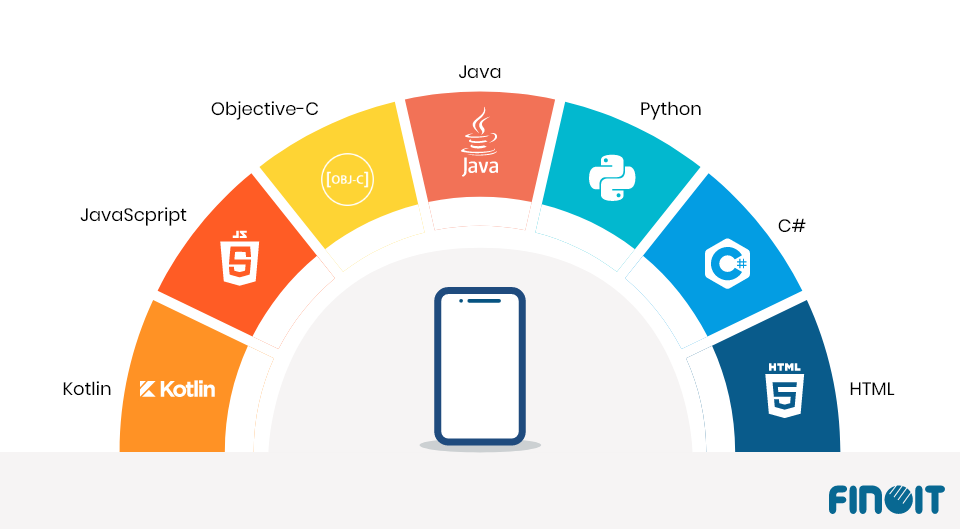
Cloud Computing Projects
The world is increasingly growing cloud-driven and so migrating to the cloud has become a common task for enterprises. The core project team consists of cloud architects, cloud security experts – much like any other software development project, cloud compliance specialists, and cloud engineers. Tasks will range from migrating workloads to the cloud, developing new applications on the cloud, optimizing the cloud architecture, and rebuilding and designing workloads.
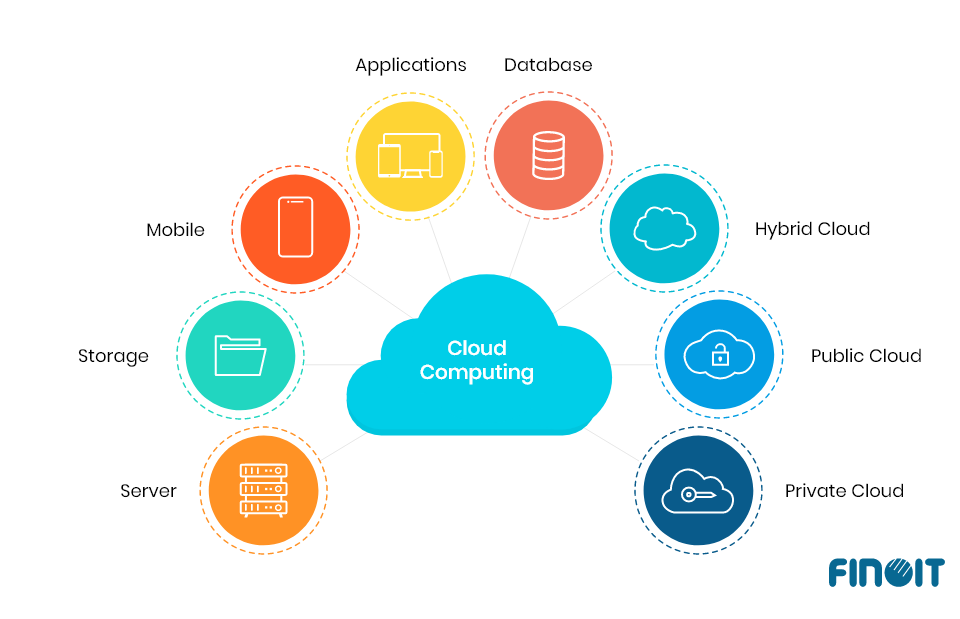
Web Development
In web development projects, a software development team develops web applications. Seemingly simple, web development projects are complex as development isn’t limited to developing user interfaces. A good web development team will have multiple experts, including a project manager, a web architect, UI/UX designers, and QA specialists, apart from web developers, who are the core members.
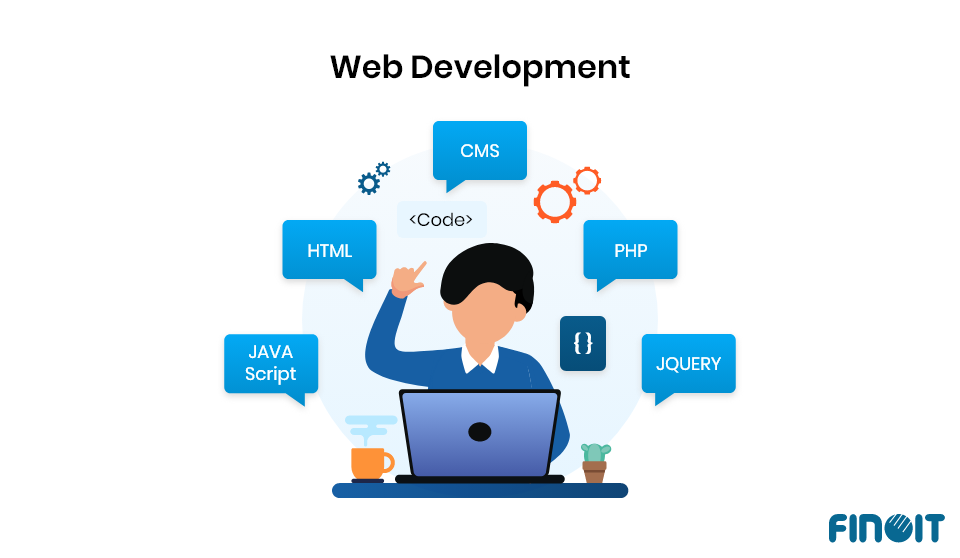
Backend Development
Projects deal with server-side development, with a focus on architecture building, database creation, and scripting. All the activities that process or manipulate data and execute in the background are dealt with by the backend project. Programmers coordinate with software architects and designers to build a database that can synchronize with user interfaces.
Frontend Development
The project focuses on developing features and elements of the user interface of the application or platform. Programmers have to translate design aesthetics into technical requirements for building frontends for which they use a host of tools such as JavaScript, HTML, CSS, etc. Front-end development projects have become crucial to determining the strategic success of businesses, as they determine the effectiveness of user interfaces (UI) and define user experiences (UX).
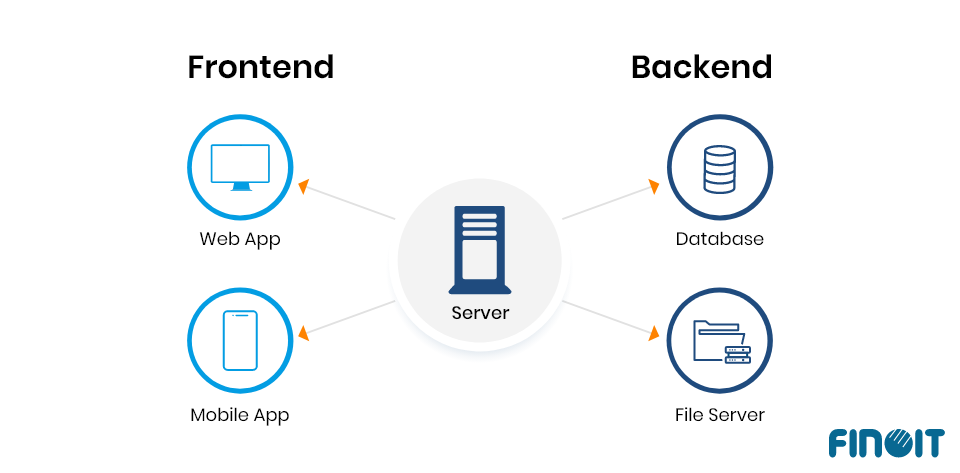
Resources needed in software development projects
Enterprises need the following resources to execute software development projects:
Capital
Precise cost estimations help in building budgetary frameworks for software development projects. Assessment of working capital characterizes the financial side of software development.
Human Resources
Human resources are vital in software development projects, providing essential skills and expertise. Key roles include collaboration of software developers, software engineers, designers, testers, project managers, business analysts, system architects, and DevOps engineers which makes up a efficient software development team structure. Effective human resource management ensures the right mix of these professionals, fostering collaboration and innovation. This alignment contributes to efficient development, high-quality software products, and timely project delivery.
Infrastructure
Infrastructure requirements in software development vary from project to project. It comprises hardware and infrastructure software – a repository of technology stacks to support development.
Time
Along with capital, time is an equally important cost element when executing software development projects. The project activities must adhere to establish timelines for in-time delivery.
Expertise
Skills, knowledge, and experience are intangible assets that decide the project’s success. Building an expertise matrix can help in methodically figuring out resource requirements.
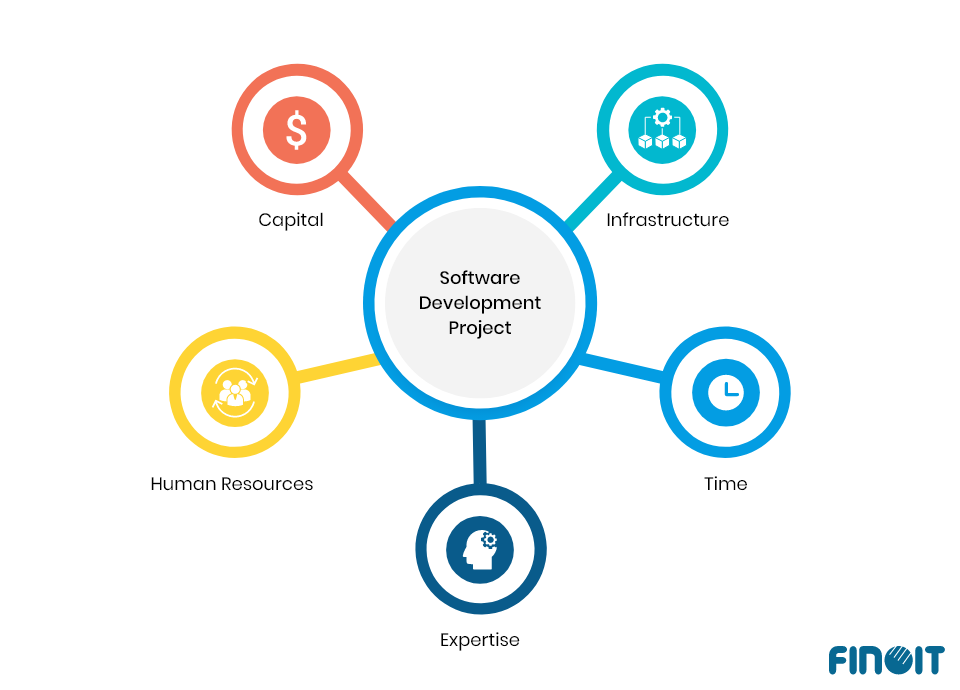
Sail to success with the right software development project strategies
Right software development strategies are essential to centralize coordination of delivery efforts. While picking up the software development project type is the first step, establishing strategies to bring the project to fruition is the next crucial step in the development process.
Understanding the nuances of the project types does half the work, as improper strategies can ruin the project. One-size-fits-all hardly applies to project type-strategy combinations, and strategies won’t automatically apply to your project.
At Finoit, we have been helping enterprises from the United States (US), Canada, Europe, and Australia build custom software development strategies for building niche software applications. Deft at working with all software development project types, we complete projects in stipulated time and assure faster go-to-market. We also strengthen in-house teams by supplementing them with our experts so that the clients can quickly reach their ambitious goals. If you need our assistance with your software development projects, connect with our experts.
